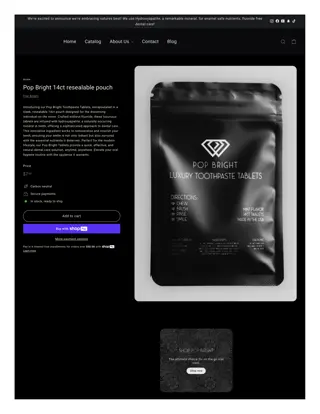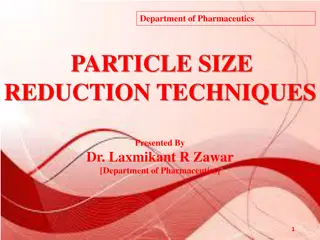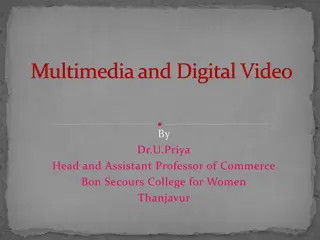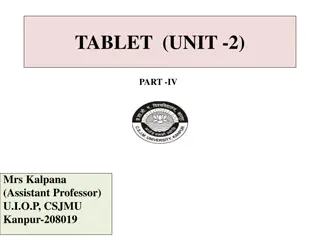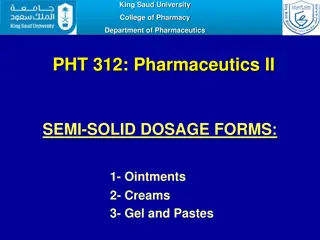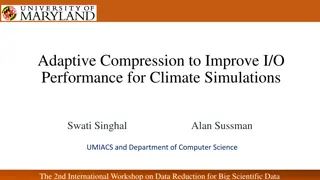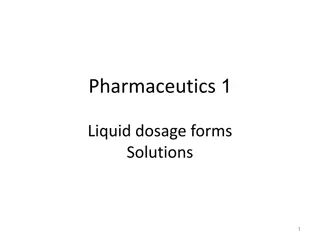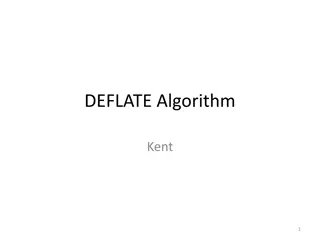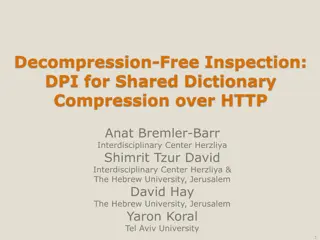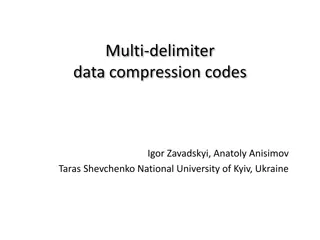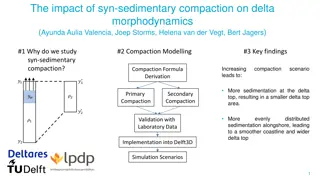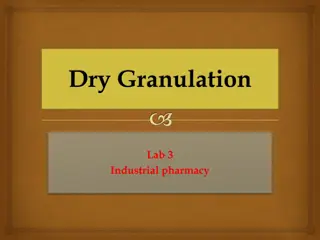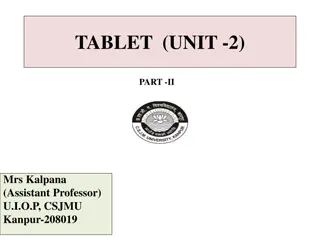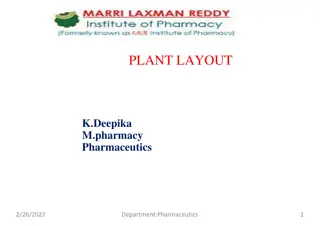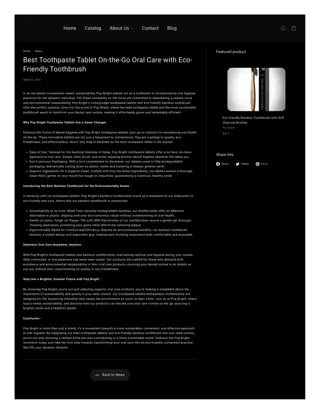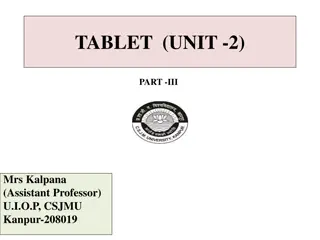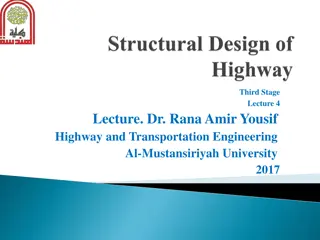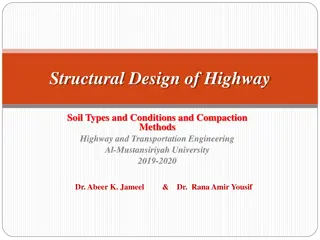Understanding Tablet Compression and Compaction in Modern Pharmaceutics
This educational material delves into the physics of tablet making, focusing on the forces involved, compaction profiles, and effects of friction. Students will gain knowledge about tablet compression, compaction, and consolidation, including the types of forces at play and the distribution of forces in tablet presses. It covers essential concepts like compression, consolidation, compaction, particle rearrangement, and various types of consolidation such as cold welding and fusion bonding.
Download Presentation

Please find below an Image/Link to download the presentation.
The content on the website is provided AS IS for your information and personal use only. It may not be sold, licensed, or shared on other websites without obtaining consent from the author. Download presentation by click this link. If you encounter any issues during the download, it is possible that the publisher has removed the file from their server.
E N D
Presentation Transcript
Compression and compaction Unit IV MPH: 103 T (Modern Pharmaceutics) (Dr.) Anupriya Kapoor Assistant Professor School of Pharmaceutical sciences, CSJMU, Kanpur In-Campus
Learning Objective After going trough the slides, students would be able to understand Physics of tablet making Force involved in tablet making Compaction profile Effects of friction
Learning outcome Students would be able to understand The basic of tablet making and knowledge of Compression, compaction and consolidation The type of forces involved in tablet compression Distribution of forces in tablet press
Tablets Tablets are defined as the solid unit dosage form of medicament or medicaments with suitable excipients. It comprises a mixture of active substances and excipients, usually in powder form, pressed or compacted from a powder into a solid dose.
Definitions Compression: the reduction in bulk volume of material on application of external mechanical forces. Consolidation: it is the increase in mechanical strength of material due to particle particle interaction. Compaction: it is a term that indicates compression and compaction of two phase system due to application of applied forces.
Particle rearrangement during compression
Consolidation The phenomena of consolidation is observed when two particles approach each other and the inter-particle distance between them in 50nm or less Factors governing consolidation The chemical nature of the materials The extent of the available surface The presence of surface contaminants The inter-surface distances
Types of consolidation Types Cold welding Fusion bonding Cold welding: when two surfaces approach each other and are close enough, their free surface energies result in strong attractive forces. The phenomena is referred as cold welding. Fusion bonding: when load is applied to the bed of particle the heat is generated due to friction, if the heat is not dissipated their is local rise in temperature that causes the melting of contact area, the melt solidifies giving rise to fusion bonding
Compaction profiles It is the hysteresis curves that establish the relationship between axial pressure and radial pressure The compaction cycle consist of two types of forces a. Axial force b. Radial force Axial force: vertical component that is applied by the upper punch during compression Radial force: horizontal component observed in the die wall, when the powder mass attempt to expand in the die
Compression Phase OA - Represents repacking of granules or powders. AB - Represents elastic deformation which continues up to B (elastic limit) BC - Represents plastic deformation and brittle fracture. Point C indicates the maximum compression force. Decompression phase: CD - Represents elastic recovery on the removal of applied force. DE - Represents recovery from plastic deformation E - Represents residual force, which holds the compact in the sides of the die. Ejection force must be greater than residual force
Effect of friction Frictional forces are interparticulate friction & die wall friction. Interparticulate friction forces occur due to particle-particle contact & it is more significant at low applied load . These forces are reduced by using glidants e.g. colloidal silica . Die wall friction forces occur from material pressed against die wall & moved it is dominant at high applied load These forces are reduced using lubricants e.g. magnesium stearate
Components of frictional forces Interparticulate friction Die-wall friction Interparticulate friction: The type of friction arises at particle /particle contacts and can be expressed in terms of coefficient of interparticulate friction. interparticulate friction = i Die-wall friction: The friction originates as a result of material being pressed against the die wall and moved down it. The effect is predominating at high applied forces when the particle rearrangement has ceased. Die-wall friction = W
Distribution of forces The fundamentals of tabletting have been carried out on single-station press or even on isolated punch & punches with hydraulic press. When force is being applied to top of a cylindric powder mass, the following basic relationship applies, since there must be an axial (vertical) balance of forces. FA = FL + FD
FA = force applied on the upper punch FL = proportion of force transmitted to the lower punch FD = is the reaction at the die wall due to friction at this surface Since there exist an inherent difference between the force applied on the upper punch and that affecting material close to lower punch, a mean compaction force FM is experienced FM = (FA + FL)/2
Since there is an exponential decay of applied transmission force, the most appropriate equation can be expressed in terms of geometric mean force, FG FG = (FA . FL)0.5



